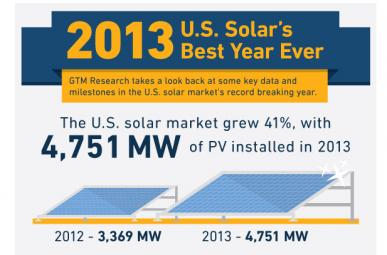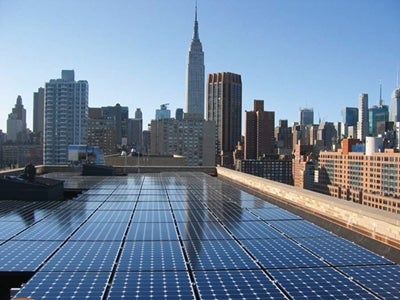
To see the full infographic, go to greentechmedia.com.
You may have heard about the recent 60 Minutes segment that inexplicably reported the cleantech sector was in steep decline. There are quite a few reports out there breaking down the many fallacies of that segment, with most correctly concluding the sector is not dead, it is in fact booming and evidence of that surging momentum is everywhere you look. Consider these five examples that show just how good things are for cleantech these days:
1. The solar industry is booming.
The facts are unequivocal: the solar industry is alive and well. According to a new report and infographic released this week by Greentech Media Research and the Solar Energy Industry Association (SEIA), 2013 was a banner year. Read More













